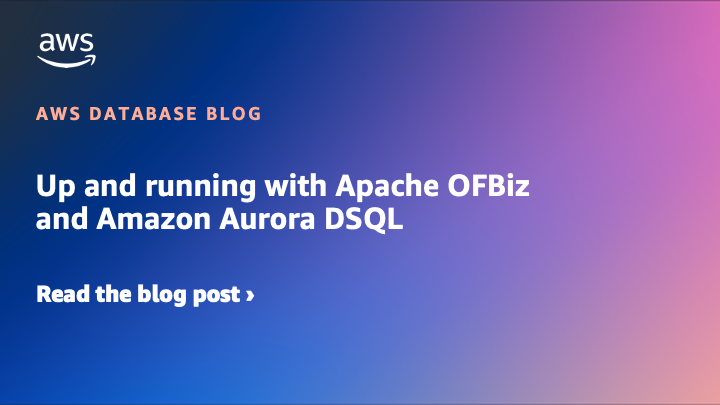AWS Database Blog
Improve PostgreSQL performance using the pgstattuple extension
In this post, we explore the pgstattuple extension in depth; what insights it offers, how to use it to diagnose issues in Amazon Aurora PostgreSQL-Compatible Edition and Amazon Relational Database Service (Amazon RDS) for PostgreSQL, and best practices for harnessing its capabilities.
Using StatsD for monitoring Oracle databases running on Amazon RDS or Amazon EC2
Monitoring databases is essential in large IT environments to prevent potential issues from becoming major problems that can result in data loss or downtime. Having custom dashboards and alarm-based monitoring for the database can help in analyzing historical metrics patterns and improve database availability by alerting users of any abnormal threshold breaches. In this post, we show you how to set up monitoring for your Oracle database using StatsD.
Optimizing cost savings: The advantage of Amazon Aurora over self-managed open source databases
In this post, we highlight often overlooked architectural designs and the inherent features of Aurora that optimize costs when deploying an open source database. The following sections examine various use cases, contrasting typical self-managed database configurations and their associated costs with the equivalent solution on Aurora, highlighting potential cost savings and operational efficiencies.
Up and running with Apache OFBiz and Amazon Aurora DSQL
In this post, we show you a worked example of taking an existing application that works on PostgreSQL databases and adapting it to work with an Aurora DSQL database. In addition to adapting for the previously mentioned aspects, we also address some data type incompatibilities and work around some limits that currently exist in Aurora DSQL.
Transition a pivot query that includes dynamic columns from SQL Server to PostgreSQL
When assisting customers with migrating their workloads from SQL Server to PostgreSQL, we often encounter a scenario where the PIVOT function is used extensively for generating dynamic reports. In this post, we show you how to use the crosstab function, provided by PostgreSQL’s tablefunc extension, to implement functionality similar to SQL Server’s PIVOT function, offering greater flexibility.
Integrate natural language processing and generative AI with relational databases
In this post, we present an approach to using natural language processing (NLP) to query an Amazon Aurora PostgreSQL-Compatible Edition database. The solution presented in this post assumes that an organization has an Aurora PostgreSQL database. We create a web application framework using Flask for the user to interact with the database. JavaScript and Python code act as the interface between the web framework, Amazon Bedrock, and the database.
Scheduled scaling of Amazon Aurora Serverless with Amazon EventBridge Scheduler
In this post, we demonstrate how you can implement scheduled scaling for Aurora Serverless using Amazon EventBridge Scheduler. By proactively adjusting minimum Aurora Capacity Units (ACUs), you can achieve faster scaling rates during peak periods while maintaining cost efficiency during low-demand times.
Improve cost visibility of an Amazon RDS multi-tenant instance with Performance Insights and Amazon Athena
In this post we introduce a solution that addresses a common challenge faced by many customers: managing costs in multi-tenant applications, particularly for shared databases in Amazon Relational Database Service (Amazon RDS) and Amazon Aurora. This solution uses Amazon RDS Performance Insights and AWS Cost and Usage Reports (CUR) to addresses this challenge. This allows for efficient grouping of tenants within the same RDS or Aurora instances, while helping you implement accurate chargeback models, optimize resource-intensive workloads, and make data-driven decisions for capacity planning.
Use pgactive for rolling major version upgrades in Amazon RDS for PostgreSQL
In this post, we explore how pgactive can perform rolling major version upgrades for Amazon Relational Database Service (Amazon RDS) for PostgreSQL, allowing for a smoother transition with reduced impact on your applications.
Grouping database tables in AWS DMS tasks for Oracle source engine
AWS Database Migration Service is a cloud service designed to simplify the process of migrating and replicating databases, data warehouses and other data stores. It offers a comprehensive solution for both homogeneous and heterogeneous database migrations, facilitating transitions between different database platforms. The migration process typically involves two major phases: Migration of existing data (full […]









